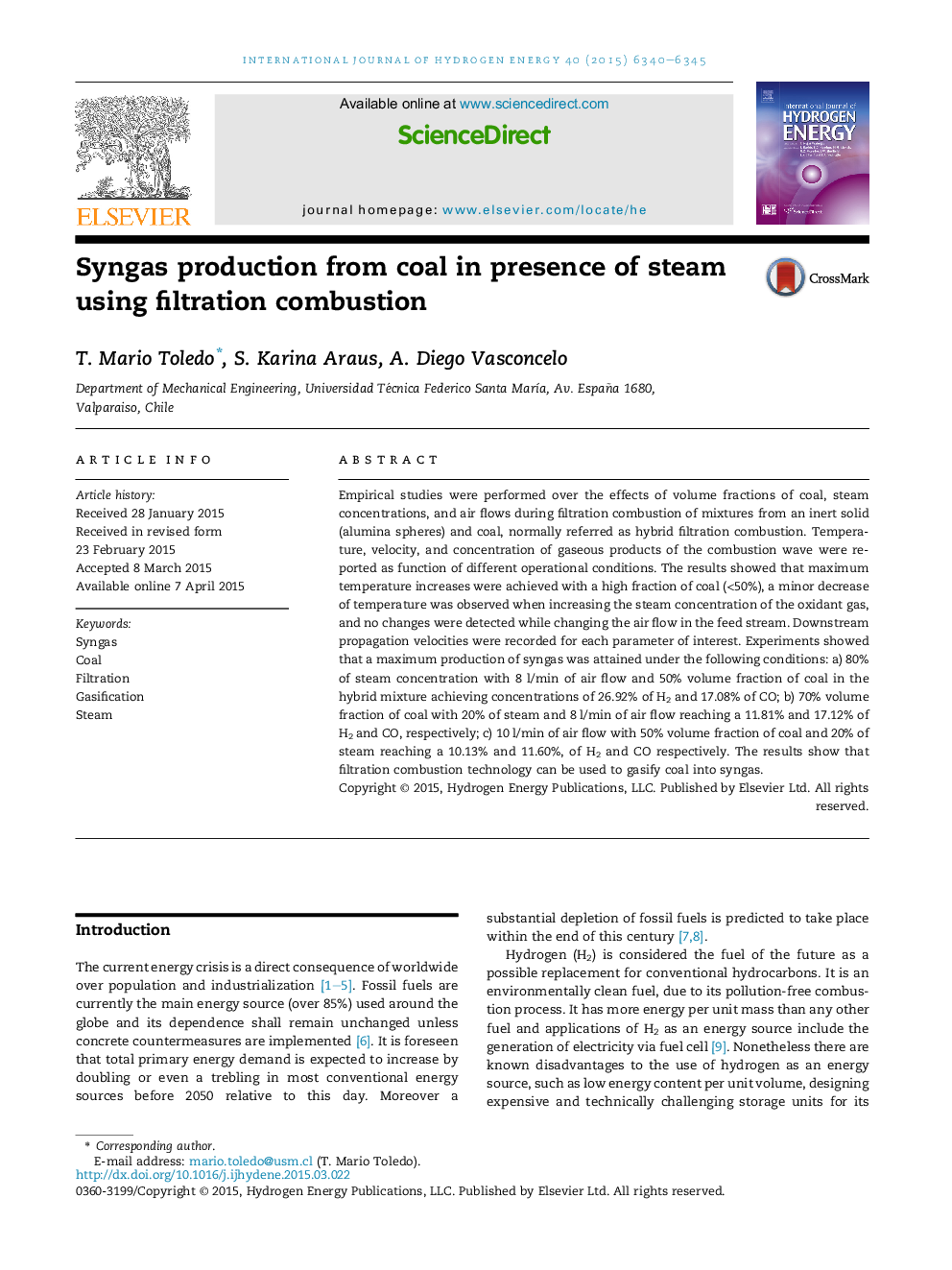| Article ID | Journal | Published Year | Pages | File Type |
|---|---|---|---|---|
| 7715479 | International Journal of Hydrogen Energy | 2015 | 6 Pages |
Abstract
Empirical studies were performed over the effects of volume fractions of coal, steam concentrations, and air flows during filtration combustion of mixtures from an inert solid (alumina spheres) and coal, normally referred as hybrid filtration combustion. Temperature, velocity, and concentration of gaseous products of the combustion wave were reported as function of different operational conditions. The results showed that maximum temperature increases were achieved with a high fraction of coal (<50%), a minor decrease of temperature was observed when increasing the steam concentration of the oxidant gas, and no changes were detected while changing the air flow in the feed stream. Downstream propagation velocities were recorded for each parameter of interest. Experiments showed that a maximum production of syngas was attained under the following conditions: a) 80% of steam concentration with 8Â l/min of air flow and 50% volume fraction of coal in the hybrid mixture achieving concentrations of 26.92% of H2 and 17.08% of CO; b) 70% volume fraction of coal with 20% of steam and 8Â l/min of air flow reaching a 11.81% and 17.12% of H2 and CO, respectively; c) 10Â l/min of air flow with 50% volume fraction of coal and 20% of steam reaching a 10.13% and 11.60%, of H2 and CO respectively. The results show that filtration combustion technology can be used to gasify coal into syngas.
Related Topics
Physical Sciences and Engineering
Chemistry
Electrochemistry
Authors
T. Mario Toledo, S. Karina Araus, A. Diego Vasconcelo,
